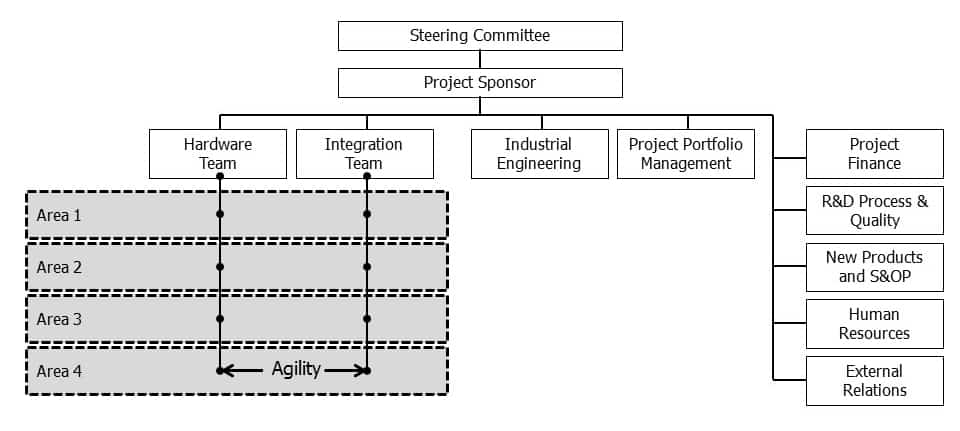Complex projects are both exciting and challenging.
On one hand complex projects have no precedent and therefore this will be a time of professional growth for all involved.
On the other hand complex projects depend on the creation of new knowledge and effective collaboration between subject specialists.
This can present significant risk and requires a clear and deliberate progression through project phases; from early concept through to the achievement of the project KPI’s.
First of all the term project management is inadequate for complex projects. Uncertain requirements combined with unpredictable technology implementation risks means that the project leader can only hope to influence the many interactions between the different specialist individuals or work groups.Therefore project governance is a better term when dealing with complex projects.
Below is a generic project governance framework for a complex project.

For more information on how this framework should by managed (or not) please see our cautionary tale – 6 signs that a project is about to implode!
There are 4 key phases of project governance from Concept to the Achievement of KPI’s as shown below.
Phase 1 – Concept though to Minimum Marketable Project
The Minimum Marketable Project is that level of project scope definition that ensures that all customers (internal and external) will get their needs met with respect to capability and profitability for a given investment.
For a complex project this is an iterative process of scope definition rather than the more regimented, sequential process used for projects where the process of scope definition is better understood and codified (e.g. construction).
This iterative process seeks to identify different design solutions and trade those off against the needs of the customer. Refer to “How do I take my complex project from concept to business sign-off?” for more information on this phase.
Often, a project is approved by the board before this phase has been completed. This is a business reality and, if this is the case, makes appropriate risk management, and governance, even more important.
Phase 2 – Minimum Marketable Project to Check-Out
If phase 1 has been governed appropriately then the level of risk involved in implementing the scope attached to the Minimum Marketable Project should be clear, quantified, and around the +/-10% level. However, even after Phase 1, there is still knowledge to be created and technology nuances to be discovered in order for the project to be integrated into the existing business systems and asset platforms.
This process of incremental discovery and response must be achieved while, in parallel, implementing time-bound elements of the project scope defined in phase 1. Refer to our White Paper “Agile project management in high-change businesses” for more information on how to oversee phases 2 and 3.
Phase 3 – Check-Out to Start-Up
By this phase the new equipment or inputs are ready to be commissioned and validated in preparation for start-up. Cross functional teams should have been used in phases 1 & 2 and these teams can now be used to facilitate the smooth introduction of the changes into the business system. This is probably the most regimented phase of the project and yet it can be done very efficiently by leveraging of the knowledge equity built up through the first 2 phases.
Phase 4 – Start-up to KPI’s Achieved
The start-up of a complex project is generally characterised by the interplay of many different resource types and much variability. Consequently there will be many improvement targets after start-up. Taking a scatter gun approach to improvements after a complex project start-up will soon exhaust resources and in the end, the prevalence of multitasking will ensure that the speed of problem resolution will actually reduce.
The trick here is to design an improvement system that will probe the production system for the different types of variability (i.e. Special-Cause Variation vs Common-Cause Variation) and in so doing prioritise limited resources towards high impact improvements. Please see “How do I steepen a learning curve after project start-up?” for more information on this phase.

